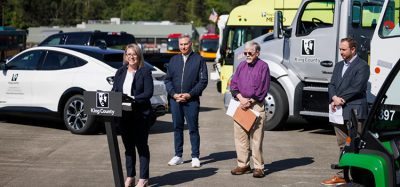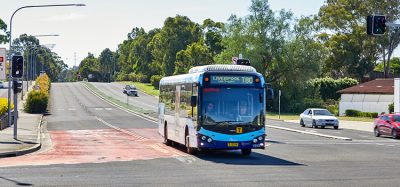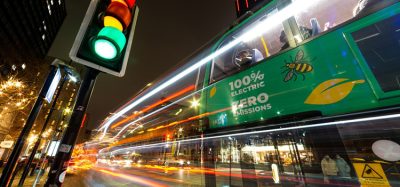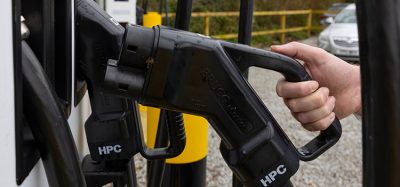Safely influencing rider behaviour
- Like
- Digg
- Del
- Tumblr
- VKontakte
- Buffer
- Love This
- Odnoklassniki
- Meneame
- Blogger
- Amazon
- Yahoo Mail
- Gmail
- AOL
- Newsvine
- HackerNews
- Evernote
- MySpace
- Mail.ru
- Viadeo
- Line
- Comments
- Yummly
- SMS
- Viber
- Telegram
- Subscribe
- Skype
- Facebook Messenger
- Kakao
- LiveJournal
- Yammer
- Edgar
- Fintel
- Mix
- Instapaper
- Copy Link
Posted: 10 June 2020 | Sam Mehmet (Intelligent Transport) | No comments yet
Bird’s Director of Safety Policy & Advocacy, Paul Steely White, tells Intelligent Transport’s Sam Mehmet how the micromobility service operator is advocating to influence rider behaviour as a way to replace as many car trips as possible, as safely as possible.
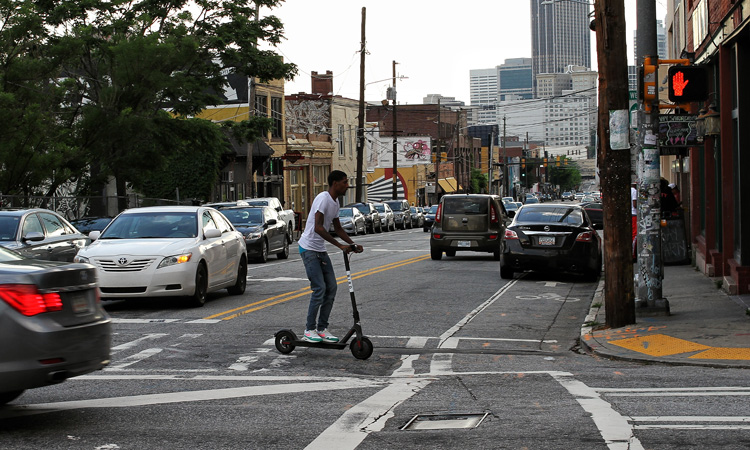

How should micromobility operators develop their safety initiatives, and what is your role within this at Bird?
I have worked in New York City for the past 25 years on sustainable transportation, running Transportation Alternatives for almost 15 years – a sort of cross between London Cycling Campaign and Sustrans. One of my primary goals at Transportation Alternatives was, of course, to improve traffic safety for road users, pedestrians and cyclists. Most of that involved work to reduce the vehicular speed limit in New York City – which we did, to 25.
We worked with Rod King on this – a UK-based campaigner who has been at the forefront of lowering city-wide speed limits all over the UK. He really helped us make the case. I was recruited by Bird in 2018 because of my safety expertise and experience, and it was gratifying to see a company that was already putting safety first but also wanted to really elevate safety to an even higher priority.
For us to do our job properly, we need to be clearly communicating, encouraging and enforcing a lawful standard of conduct
A lot of the work I have been involved with at Bird has been collaborations with the broader safety community, recognising that, as good as we are, we can’t do it alone. We’ve been engaging with a lot of the leaders in the field; safety researchers, both epidemiologists and medical professionals, a lot of regulators and city agencies, and local safety advocates.
It’s important to look at the major studies taking place about micromobility so that we can try and answer the important questions, like what are the causes of the crashes we’re seeing? What’s the rate of the crashes? Are we seeing disproportionate rates of injury with micromobility versus cycling, for example? What are the kinds of injuries we’re seeing? What are the probable factors? More importantly, once we understand what the research is uncovering, what are the implications for that research? How can we use those findings to inform preventative measures, whether they be vehicle design, vehicle maintenance, rider education, infrastructure or otherwise?
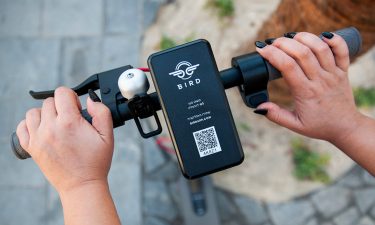

One of the main findings is that the more serious injuries are happening because of run-ins with motor vehicles. Approximately 80 per cent of the fatal crashes we’ve seen, and also a majority of the serious injury crashes, are happening because of impact from cars and trucks – and most of those due to lawbreaking, whether that be speeding, running a red light or a hit and run.
I think that really brings the conversation back to infrastructure. Throughout the research, there’s been consistent identification of protected bike lanes, protected intersections and lower vehicular speeds as potential solutions to safety challenges. This was also borne out in the recent International Transport Forum (ITF) report, where their first recommendation very clearly allocates protected space for micromobility. Further, the number two recommendation was to focus on restricting motor vehicle speeds, recognising that the kinds of design in street management intervention that have been popularised in cities like Amsterdam or Copenhagen, and increasingly in cities like London, Paris and Berlin, are really what we need to see across the world to make things safer.
Cities are increasingly looking to us to not just educate riders, but to enforce against bad behaviour
Bird has worked in collaboration with a number of cities, like Nashville for example, to realise protected bike lanes. Miami and Indianapolis are two cities that are building more protected lanes with fees from operators like Bird, and we’re also providing the data to help cities develop those facilities. Atlanta is another example, which has announced a $5 million expansion of its bike-lane network. However, as important as these infrastructure initiatives are, operators also need to consider exactly what they can control. Whilst that ultimately comes down to operations, it starts with vehicle design and engineering.
This is where Bird has really distinguished itself among its peers; designing and engineering some of the safest, most robust, stable vehicles. Our flagship vehicle – the Bird Two model – has dual disc brakes, dual lights that illuminate the road in front of the rider and lights that highlight the riders’ face so that it’s more visible to other road users, and a more stable platform.
Infrastructure, vehicle design and regulation might be integral to safety, but the rider is still in control of the device. How does Bird look to educate its users about safely operating a scooter in an urban environment?
Rider education begins with people getting a very clear in-app rundown of the main sorts of safety behaviours that they need to abide by. Before people actually take their first ride, they receive a tutorial, but we also recognise the need to augment that with in-person education and constant reminders. For us to do our job properly, we need to be clearly communicating, encouraging and enforcing a lawful standard of conduct.
What we’ve seen work fastest is to start incentivising good behaviour through financial signals. If riders exhibit the right sorts of behaviours while riding a scooter – if they park it properly or they don’t ride on the pavement – Bird will give them a discount on their next ride. In the same token, Bird also has the right to fine pedestrians, and may even bar or prohibit riders from the app if they’re not following the law and being respectful of pedestrians. Cities are increasingly looking to us to not just educate riders, but to enforce against bad behaviour.
What are your thoughts on implementing measures such as e-scooter driving tests?
I think we should be mindful not to impose too many obstructions to micromobility and recognise that scooters, as long as they are speed limited to 15 miles per hour and below, are really no more threatening than a regular bicycle in terms of their mass and their weight. Looking at speed‑limited, shared e-scooters is a smart regulatory principle, and I think it’s one that will ultimately improve safety for everyone to the extent that we make shared e-scooters accessible and convenient for everyone and really maximise the car trip replacement that we’re already seeing. That’s another point that was really front and centre in the ITF report and in many of the other studies we’ve seen; when we’re talking about improving safety, the conversation is also about replacing car trips and reducing the risk of colliding with a motor vehicle altogether.
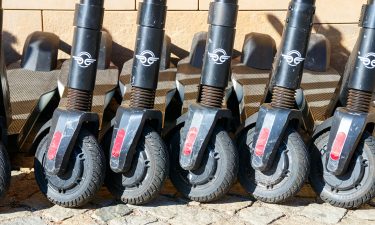

It’s uncommon for a scooter rider to injure a pedestrian, so I think as long as we’re talking about shared e-scooters that are limited to 15mph and below, I don’t think they should be required to have the same level of education that someone who drives a two tonne vehicle should be required to have.
There’s the principle that your responsibility is really commensurate with your capacity to harm others, which is why we require lorry drivers to go through more extensive education than car drivers, for example. In the same way, we should definitely ensure scooter riders are held to account for irresponsible or illegal behaviour, but without putting unnecessary roadblocks to access in their way.
What success have Bird’s safety initiatives, such as the helmet selfie, seen in practice?
We are soon to release a follow-up to our 2019 study where we reported our incident rates, our complaint rate and our responsibilities as an operator. The follow-up will focus on the trend we are seeing towards declining incidents and declining complaints. We don’t know exactly why that’s the case, but we can agree that it’s definitely a positive trend. We now need to decipher whether the declining incidents and injuries are due to better city infrastructure, better rider education, better motorist awareness or other factors, so that we can build on it further.
At the same time, we’re monitoring the impact of helmet selfie, though the campaign is only a few months old. It’ll be some time before we can see if we’re moving the needle on helmet use, but the data that we’re getting is positive and we look forward to reporting more specifically with the new release of our safety report.
We should definitely ensure scooter riders are held to account for irresponsible or illegal behaviour, but without putting unnecessary roadblocks to access in their way
We also hope that the release of this report, alongside the other studies I mentioned earlier, will act as evidence for other cities and organisations looking to invest in micromobility. This sort of evidence is definitely in high demand. I think it’s good for the industry that institutions like the ITF are now getting more vocal about the safe track record of micromobility, going beyond the headlines to look at the data and really report the facts.
I think that also helps chip away against what I see sometimes as a double standard, where, at least in the U.S., 40,000 deaths a year from cars is business as usual, but a few scooter injuries are somehow a public health crisis. Keeping things in context is also important as we continue to raise the bar of safety.
Do you think the future of urban mobility is truly micro?
The future of mobility has to be micro – it simply comes down to the climate crisis and the imperative to reduce our carbon emissions. The sheer number of short car trips that are replaceable just boggles the mind. I’m very encouraged by the 50 per cent car trip replacement rate we’re seeing in cities like Los Angeles and Denver, but ultimately it may just come down to public demand.
I think that’s really the bedrock of the micromobility revolution; the fact that people are taking to e-scooters regularly for commuting, even when other options are available. If we’re talking about a responsive transportation system that meets public demand and climate policy, we are definitely talking about micromobility.
Micromobility, urban environments and COVID-19 – Rebecca Hahn, Chief Corporate Responsibility Officer, Bird
Evidence that cities have been shifting away from cars, after realising their destructive effects on the environment and road user safety, was present prior to COVID-19 but will be even more poignant after the health crisis.
Shelter-in-place recommendations have pulled the curtain back on a future for our cities that involves less air pollution and an opportunity to improve infrastructure to encourage less personal car usage. If it’s possible to find a silver lining in all of this, one might be that cities can take a fresh look at how to improve their roads for residents once streets are open for everyone again.
Biography


Related topics
Fleet Management & Maintenance, Mobility Services, Passenger Experience, Sustainable Urban Transport, Vehicle & Passenger Safety
Issue
Issue 2 2020
Related modes
e-scooters
Related organisations
Bird
Related people
Rebecca Hahn




